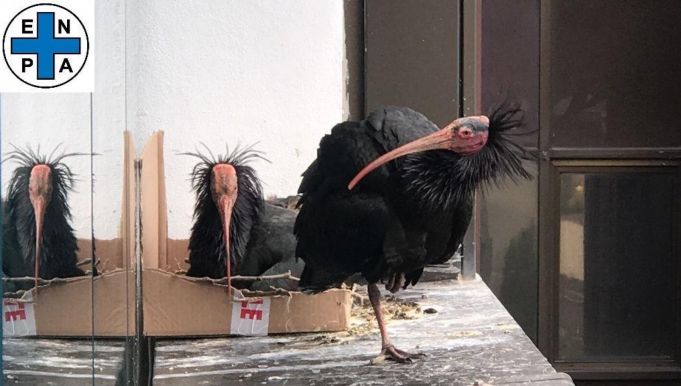Two rare ibis make a nest on Rome rooftop
Pair of Northern Bald Ibises make a nest on the roof of the Wind Tre building in Rome.
Two Northern Bald Ibises - one of the world's most endangered species of bird - are nesting on the roof of a telecommunications company building in the southern outskirts of Rome.
The birds, along with the eggs in their nest, are being monitored by Italy's national board for animal protection ENPA and volunteers from the World Wildlife Fund.
The ibis - called Hannibal and Smudo - are nesting beside the staff recreational terrace of the Wind Tre building in the Parco De Medici area of the capital.
The company's employees have been advised not to approach or feed the birds whose species was until recently classified by the International Union for Conservation of Nature as "in danger of extinction."
Once widespread throughout the Mediterranean basin, from southern Europe to north Africa to the Middle East, the bird disappeared from European skies more than three centuries ago.

The Northern Bald Ibis is now the subject of a reintroduction project, financed under the European Union's Life + programme, active in Austria, Germany and Italy.
The two ibis in Rome are fitted with GPS transmitters allowing them to be tracked by staff from the Waldrappteam project, whose goal is to reintroduce the birds to Europe.
Also known as the hermit ibis, or waldrapp, (Geronticus eremita), the migratory bird is normally found in barren, semi-desert or rocky terrain.
Due to poaching, habitat destruction and agricultural pesticides, the species was at serious risk of dying out completely in recent years but has begun to make a comeback thanks to sustained conservation efforts.
However its numbers are still very low, with only about 700 specimens left in the wild, mostly in southern Morocco.
Cover photo Il Messaggero
General Info
View on Map
Two rare ibis make a nest on Rome rooftop
Via Salvatore Rebecchini, 1/7, 00148 Roma RM, Italy


















